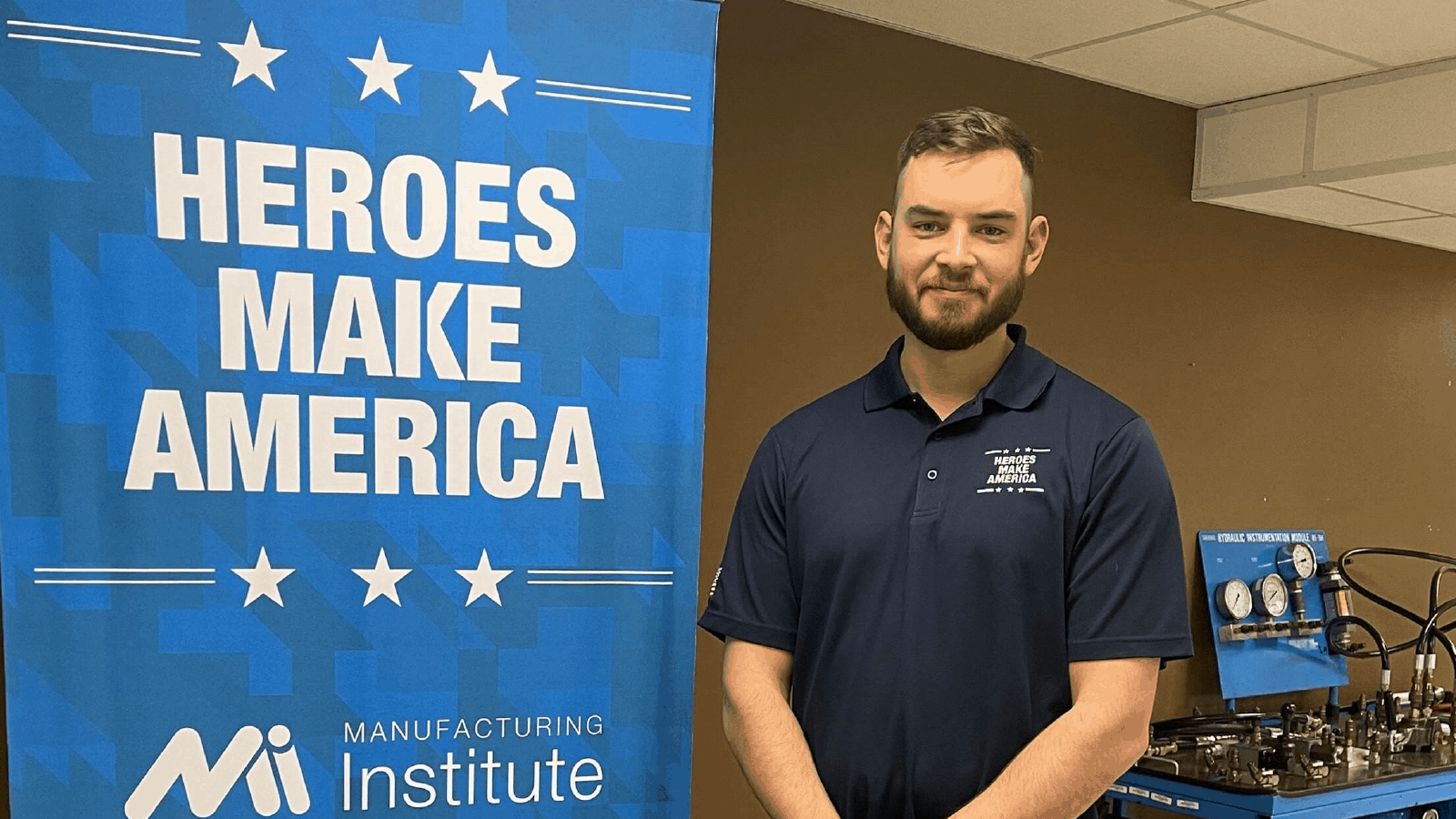A Hero Gets a Shot at Manufacturing

Zachary Willis has transitioned out of the military twice—and the second time, The Manufacturing Institute’s Heroes MAKE America program made all the difference.
A passion for service: Willis had wanted to join the Marine Corps his entire life and felt even more strongly about it after 9/11. A little less than a year after he graduated high school, he did so. “I wanted to serve my country, and my country needed me,” he told us.
Two exits: Willis spent four years in the Marine Corps on active duty, with two deployments as an infantryman. He spent the next four years in the reserves, then left the military for a short stint in the civilian world. But feeling adrift, he ended up joining the U.S. Army as a mechanic in 2017.
When health issues led him to transition out of the military a second time, he knew he needed a strategy for what would come next. The Heroes MAKE America program, which helps members of the military community find opportunities in manufacturing, sounded like a great fit.
- “Getting out this time around was so different from the first time,” said Willis. “The first time I didn’t really have a plan. This time I was a lot more mature. I was like, I need to make sure there is something out there—and Heroes MAKE America seemed like a great opportunity to get into an industry with a lot of growth potential.”
A different world: Heroes exposed Willis to a world of modern manufacturing that was well beyond what he had expected.
- “I always thought manufacturing was just a bunch of guys on an assembly line who put things together for 30 years and then retired,” said Willis. “But then I got into this program, and I saw how innovative it is. It’s constantly seeking improvement. It’s so different from the manufacturing of my father’s or grandfather’s generation.”
An expanded network: Willis is enthusiastic about his experience in the Heroes program—both in terms of the skills training and the opportunities to explore career options.
- “It’s been amazing,” said Willis. “The ability to reach out and connect with other employers all around the country—from smaller companies to huge international corporations. You don’t see that in very many places. I wish more people took advantage of programs like this.”
What’s next: Willis graduated from the program in early March and received four different job offers. He’ll start a new role soon manufacturing gunpowder at Hodgdon Powder Company near his home in Kansas. In fact, he’s so enthusiastic about the Heroes MAKE America program that he’s already encouraging his new employer to get involved.
- “The company isn’t even a part of the program, and when I told them about it, they said, huh, we gotta look into that,” said Willis. “It’s something more companies should get on board with.”
Heroes gets a boost: Willis also got to take on a new challenge during his program: using virtual reality technology to supplement his instructor-led hands-on learning. The technology let him learn everything from how to put on personal protective equipment correctly in a manufacturing environment to how to use welders, micrometers and digital calipers.
And as it happens, even more Heroes students will be able to engage virtually in the coming years. Thanks to a new $2.25 million donation from the Caterpillar Foundation, the Heroes program will be able to increase its integration of virtual reality technology and expand training opportunities for the military community.
The last word: “Caterpillar is proud of the support provided to veterans and their families through the Caterpillar Foundation’s donation to the Heroes MAKE America program,” said Caterpillar Chairman and CEO Jim Umpleby. “I am pleased the Foundation can help make this world-class skills training program available to all members of the global military community and connect them to careers in manufacturing.”
